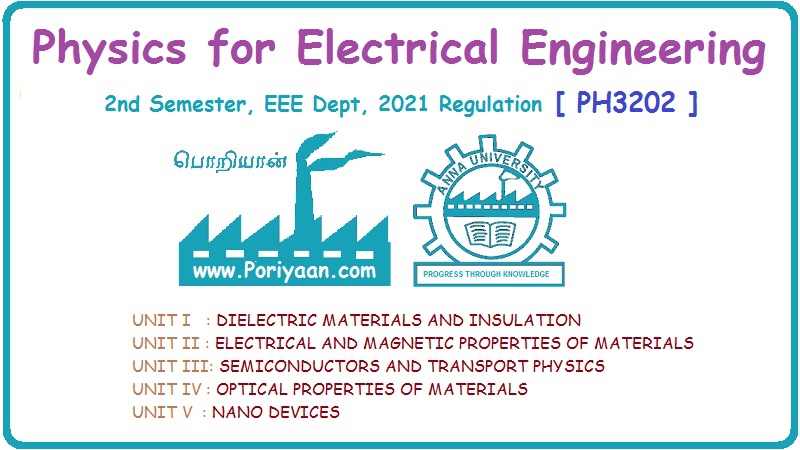Physics for Electrical Engineering: Unit II: a. Electrical Properties of Materials
Effective mass of electron and hole
Electrical Properties of Materials
The mass acquired by an electron when it is accelerated in a periodic potential is called effective mass of an electron. It is denoted by m*.
EFFECTIVE
MASS OF ELECTRON AND HOLE
Effective mass of electron
The mass acquired by an electron
when it is accelerated in a periodic potential is called effective mass of an
electron. It is denoted by m*.
Explanation:
When
an electron is accelerated by an electrical magnetic field in a periodic
potential, the mass of the electron is not a constant. But, it varies with
respect to the field applied. This varying mass is called effective mass (m*).
Derivation of effective mass of
electron
Consider
a crystal subjected to an electric field of intensity 'E'. Due to this applied
field, the electron gains a velocity which can be described by a wave vector k.
According
to wave mechanics, a particle moving with a velocity v is equivalent to a wave
packet moving with a group velocity vg
Group
velocity with which the electron can travel
vg
= dw / dk ....(1)
where
ω angular frequency of the electron
k→
wave vector
We
know that E = hv
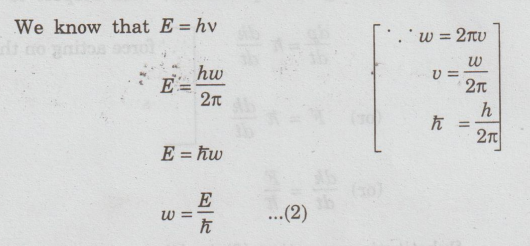
Substituting
(2) in (1),
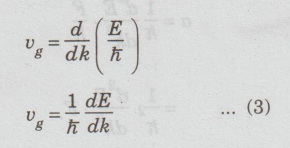
The
acceleration 'a' experienced by the electron is given by
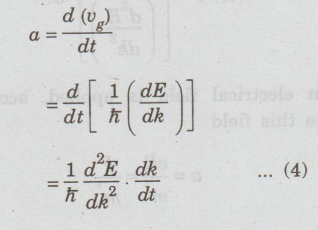
Momentum
(p) of an electron inside the crystal.
p
= h / λ (from De-Broglie’s equation)
=
h/2π 2π/λ
= hk [k =
2π/λ]....(5)
Differentiating
the equation (5) with respect to 't'
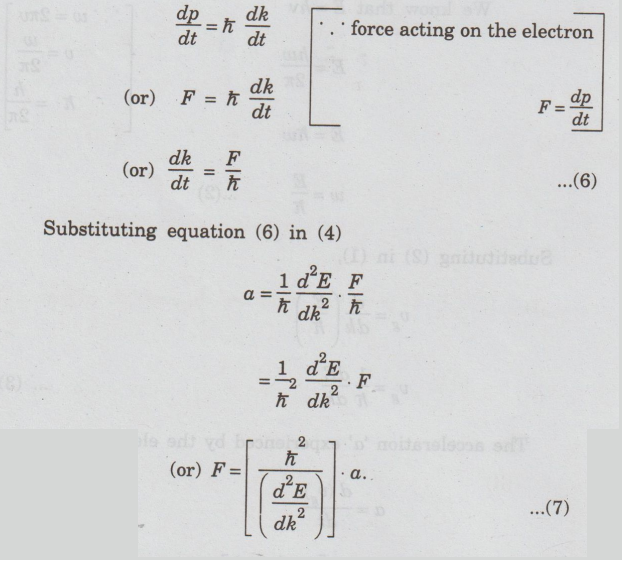
When
an electrical field is applied, acceleration of the electron due to this field
α
= eE/ m*= F/m* [F=
eE]
or
= m*a...(8)
Comparing
the equations (7) and (8), we have
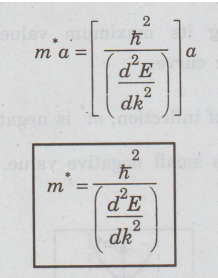
The
above equation indicates that the effective mass of an electron is not a
constant, but depends on the value of d2E/dk2
Special cases:
case (i) If d2E/dk2
is positive, then m* is also positive
case (ii) If d2E/dk2
is negative, then m* is also negative
case (iii) If d2E/dk2 is more, then the electrons behave as
light particle
case (iv) If d2E/dk2
is very small, then the electrons behave dk as heavy particle.
Variation of m* with k:
Figure
2.21 shows the variation of m* with k. Near k = 0, the effective
mass approaches m. As the value of k increases, m* increases
reaching its maximum value at the point of inflection on the E-k curve.
Above
the point of inflection, m* is negative and as k tends π to it
decreases to a small negative value.
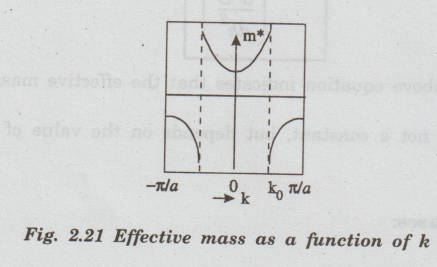
Physics for Electrical Engineering: Unit II: a. Electrical Properties of Materials : Tag: : Electrical Properties of Materials - Effective mass of electron and hole
Related Topics
Related Subjects
Physics for Electrical Engineering
PH3202 2nd Semester 2021 Regulation | 2nd Semester EEE Dept 2021 Regulation
